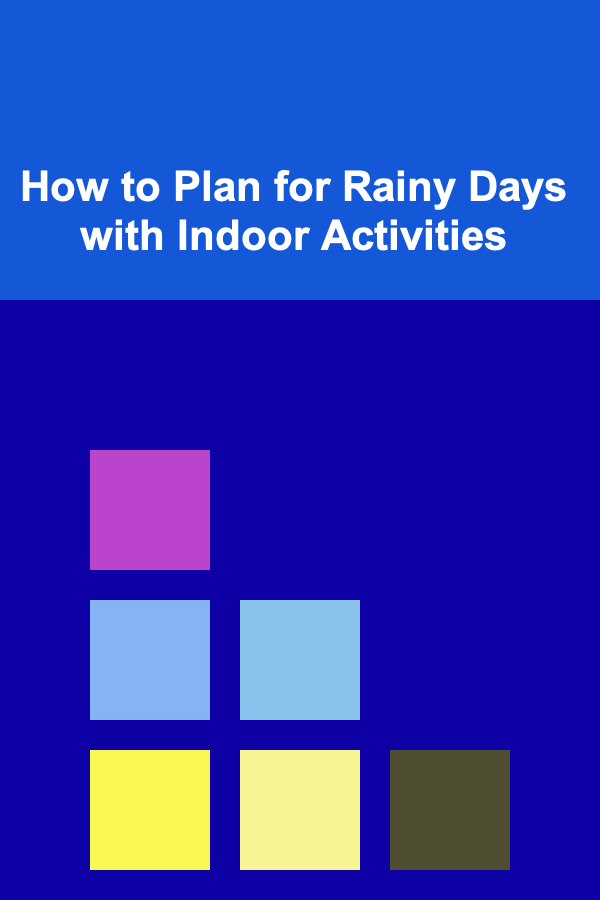
Effective Strategies for Selling Digital Language Learning Apps
ebook include PDF & Audio bundle (Micro Guide)
$12.99$11.99
Limited Time Offer! Order within the next:

The digital language learning market is growing rapidly, driven by an increasing demand for self-paced and flexible learning solutions. With language barriers being a persistent challenge globally, digital language learning apps offer an effective way for people to acquire new languages at their own pace. However, launching and marketing a language learning app requires more than just offering great content; it demands a targeted, strategic approach to reach users and stand out in a competitive marketplace.
This guide will explore actionable strategies for selling digital language learning apps, covering everything from product development and branding to marketing tactics and customer retention strategies.
Develop a High-Quality, Engaging App
Before you start thinking about how to sell your digital language learning app, it's essential to ensure that the app itself is of high quality. The user experience (UX) and user interface (UI) design will play a major role in user retention and satisfaction.
1.1 Personalization and Adaptive Learning
One of the most effective ways to engage users is by providing personalized learning experiences. Apps that offer adaptive learning---where the content adjusts based on the learner's progress---tend to keep users more engaged. This approach ensures that the learner is consistently challenged without feeling overwhelmed. Features like spaced repetition, real-time feedback, and dynamic difficulty scaling are all highly attractive to learners.
1.2 Gamification and Motivation
Incorporating elements of gamification such as levels, badges, rewards, and social sharing can motivate users to continue using the app regularly. By turning language learning into a game, you create a more enjoyable experience that encourages users to reach their language goals.
1.3 Multi-Device Accessibility
Ensure that your app is available on multiple platforms---smartphones, tablets, desktops, and possibly even offline. The more flexible your app is in terms of access, the better your chances of maintaining a loyal user base.
1.4 High-Quality Content and Curriculum
The success of any language learning app depends on the quality of its content. Partner with experienced language educators or linguists to design a curriculum that is both effective and enjoyable. Ensure the content covers essential aspects such as vocabulary, grammar, pronunciation, reading, writing, listening, and speaking.
Understand Your Target Audience
To successfully sell your app, you need to have a deep understanding of your target audience. This will shape your marketing efforts, content, and app features.
2.1 Identify Specific Language Learners
There are several types of people who might use a language learning app:
- Beginners: Users who are just starting to learn a language.
- Intermediate Learners: Those who have some knowledge of the language but need practice to become fluent.
- Advanced Learners: People who want to refine their language skills and focus on more complex aspects like idiomatic expressions and cultural nuances.
- Travelers: Individuals who need basic conversational skills for travel purposes.
- Professionals: Users who want to learn a language for career advancement or business dealings.
By identifying the unique needs of these groups, you can develop marketing campaigns and app features that directly address their specific challenges and goals.
2.2 Cultural Sensitivity
It's essential to understand that language learning is not just about words; it's also about culture. Tailor your app's content to reflect cultural nuances and idioms, as learners often seek more than just language---they want to immerse themselves in the culture associated with that language.
2.3 Global Market Segmentation
Language learners are not limited to English speakers. For instance, Mandarin, Spanish, and French are in demand among learners worldwide, while apps in other languages, such as Arabic or Japanese, may appeal to specific regions. Understanding these trends and tailoring your app to address the specific needs of global markets can help increase your user base.
Leverage Effective Pricing Models
Determining the right pricing model is crucial when selling your digital language learning app. You need to balance affordability with sustainability. Offering flexible pricing models will allow you to cater to a broader audience.
3.1 Freemium Model
Many successful language learning apps adopt a freemium model, where users can access basic features for free but need to pay for premium features. This approach allows you to build a large user base while generating revenue from those who want an enhanced experience. The premium features might include:
- Advanced lessons
- Personalized feedback
- Offline access
- Ad-free experience
3.2 Subscription Model
A subscription model (monthly, quarterly, or annually) is another popular pricing strategy. This model works well for language learning apps as it ensures recurring revenue while encouraging long-term commitment from users. You can offer different subscription tiers depending on the features and services provided.
3.3 One-Time Purchase
A one-time purchase model might work for apps that offer complete language courses or niche language learning experiences. However, this model can be more challenging to sustain in the long run as it doesn't provide a consistent revenue stream.
3.4 Discounts and Promotions
Occasionally offering discounts for new users or running limited-time promotions (e.g., a free month for referrals) can help attract new customers. Offering seasonal deals, such as New Year's promotions or back-to-school discounts, can also boost sales during high-demand periods.
Optimize App Store Listings for Visibility
App store optimization (ASO) is an essential part of the strategy for selling your digital language learning app. The more visible your app is on the app store, the more downloads you're likely to receive.
4.1 Keyword Optimization
Research relevant keywords that language learners are likely to search for when looking for apps. Use these keywords in your app's title, description, and tags. Focus on both broad keywords like "learn Spanish" or "English practice" and more niche keywords like "business French" or "Italian for travelers."
4.2 App Icons and Screenshots
Your app's icon is the first impression users will have of your app. Make sure it is eye-catching, professional, and relevant to the language learning experience. Additionally, include high-quality screenshots or demo videos that showcase the app's interface and highlight its key features.
4.3 User Reviews and Ratings
Positive user reviews and ratings significantly impact your app's ranking in the app store. Encourage users to leave reviews by prompting them at appropriate times, such as after completing a lesson or achieving a milestone. Respond to reviews, both positive and negative, in a professional and constructive manner.
Use Digital Marketing Tactics
Once you have a great app, it's time to promote it. Digital marketing is a powerful tool for spreading the word about your language learning app.
5.1 Content Marketing
Start a blog or create video content that offers valuable information about language learning. Blog posts can include tips for learning a new language, cultural insights, or success stories of people who used your app to become fluent. Video tutorials, reviews, and challenges on platforms like YouTube can also help create buzz around your app.
5.2 Social Media Advertising
Paid social media advertising is a highly effective way to promote your app to targeted audiences. Platforms like Facebook, Instagram, and TikTok offer advanced targeting options, allowing you to reach users based on factors like location, language preference, and learning goals. Ads with short, engaging videos or carousel images demonstrating the app's key features often perform well.
5.3 Influencer Partnerships
Partnering with influencers who focus on language learning, travel, or education can help expand your reach. These influencers can review your app, share their experiences, or demonstrate how it helps them learn a new language. Choose influencers who have an engaged audience and whose values align with your brand.
5.4 Email Marketing
Email marketing can be an effective way to nurture relationships with potential users. Offering a free trial or discount code in exchange for signing up for your email list can help you build a targeted subscriber base. Regularly send out educational content, product updates, and promotional offers to keep your audience engaged.
Build a Community Around Your App
Building a community of learners is one of the best ways to keep users engaged and encourage word-of-mouth referrals.
6.1 Create a Forum or Social Media Group
Consider creating a community space, such as a Facebook group or a forum within the app, where users can share their progress, ask questions, and offer support to one another. Language learning is often more successful when learners have access to a supportive group.
6.2 Encourage User-Generated Content
Incentivize users to share their learning journeys by posting photos or videos of their progress on social media. You could create hashtags, offer prizes for the best posts, or simply encourage users to celebrate milestones, such as reaching a certain number of lessons completed or achieving fluency in basic conversations.
Focus on Customer Retention
Customer retention is just as important as customer acquisition, if not more so. It's cheaper to retain existing users than to acquire new ones, so building loyalty is key to the long-term success of your app.
7.1 Push Notifications and Reminders
Send friendly reminders to users who haven't logged in for a while, encouraging them to continue their learning journey. You can also use push notifications to notify users of new features, updates, or special promotions.
7.2 Offer Consistent Updates
Regular updates with new features, lessons, or enhancements keep users excited about your app and encourage them to continue using it. These updates should address user feedback and focus on improving the learning experience.
7.3 Loyalty Programs
Implement a rewards program where users earn points or badges for consistent use of the app, referring friends, or achieving milestones. These incentives can encourage users to stay engaged and promote the app to others.
Conclusion
Selling a digital language learning app is a multifaceted endeavor that requires a combination of high-quality product development, smart pricing, effective marketing, and a strong user-focused strategy. By understanding your target audience, creating an engaging app, leveraging the right pricing model, optimizing for app store visibility, and employing digital marketing tactics, you can build a successful language learning business. Furthermore, focusing on customer retention and building a loyal user community will ensure your app thrives in the long term.
Reading More From Our Other Websites
- [Digital Decluttering Tip 101] Unfollow, Unfriend, Unburden: Strategies for a Healthier Online Timeline
- [Home Storage Solution 101] How to Store Your Shoes Without Creating a Mess
- [Organization Tip 101] How to Create a Functional and Organized Craft Corner
- [Personal Investment 101] How to Sell Deep Learning Models for a Steady Stream of Income
- [Home Security 101] How to Use Door and Window Sensors to Strengthen Your Home's Defense
- [Personal Care Tips 101] How to Incorporate Hair Oil into Your Daily Hair Care Routine
- [Organization Tip 101] Why Organizing Your Tools Can Save Time on DIY Projects
- [Personal Care Tips 101] How to Use Hair Serum to Protect Your Hair from Heat Damage
- [Sewing Tip 101] Choosing the Right Needle, Thread, and Fabric: A Beginner's Decision Matrix
- [Personal Care Tips 101] How to Find a Sulfate-Free Conditioner That Actually Works

How to Clean Your Home Using a Simple 5-Step Routine
Read More
How to Create a Pet-Friendly Environment at Home
Read More
How to Plan for Rainy Days with Indoor Activities
Read More
How to Tidy Up Your Home in the Morning Before Work
Read More
How to Update Your Kitchen with Budget-Friendly Design Ideas
Read More
How to Choose the Right Wine Opener: A Comprehensive Guide
Read MoreOther Products

How to Clean Your Home Using a Simple 5-Step Routine
Read More
How to Create a Pet-Friendly Environment at Home
Read More
How to Plan for Rainy Days with Indoor Activities
Read More
How to Tidy Up Your Home in the Morning Before Work
Read More
How to Update Your Kitchen with Budget-Friendly Design Ideas
Read More